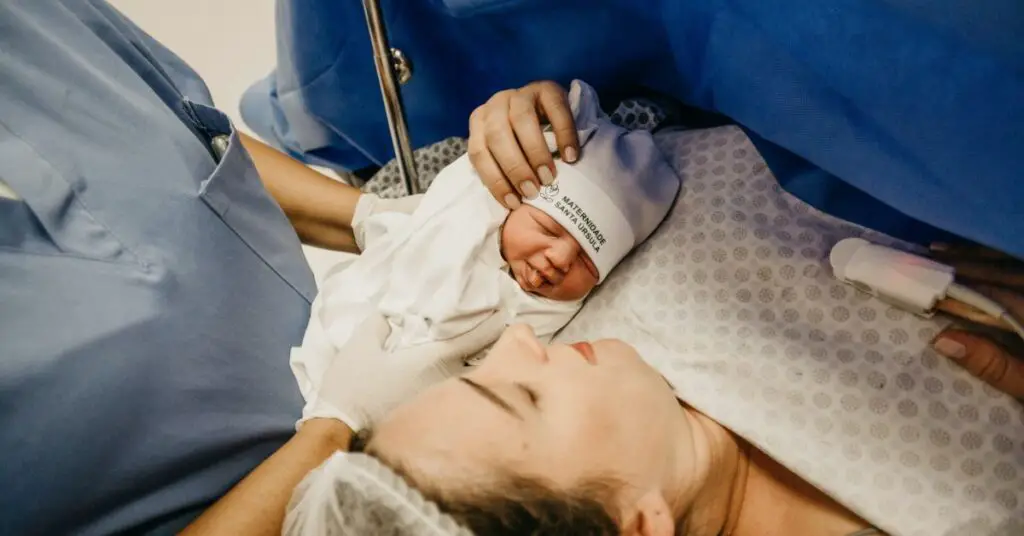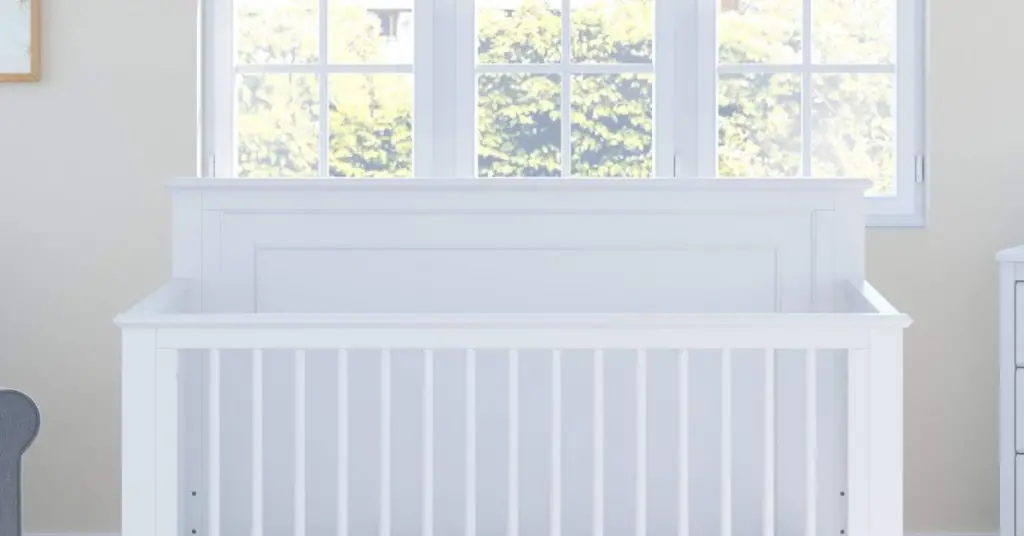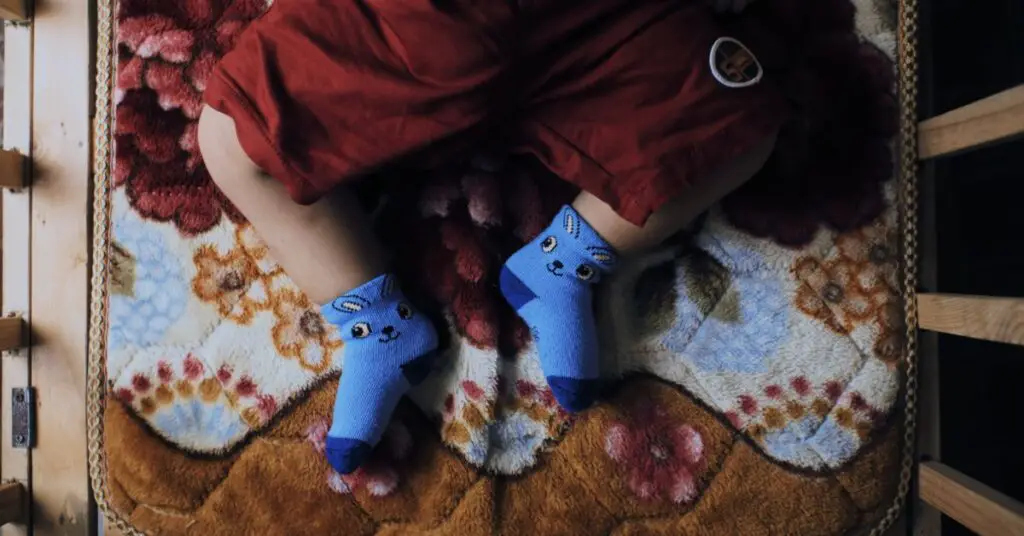Wondering why do cribs have slats? Find out why cribs have those pesky slats or bars and learn about the different reasons why they’ve been used for centuries.
The products mentioned on this page were independently selected by Babycious editors. As an Amazon Associate, Babycious may earn a commission from qualifying purchases.
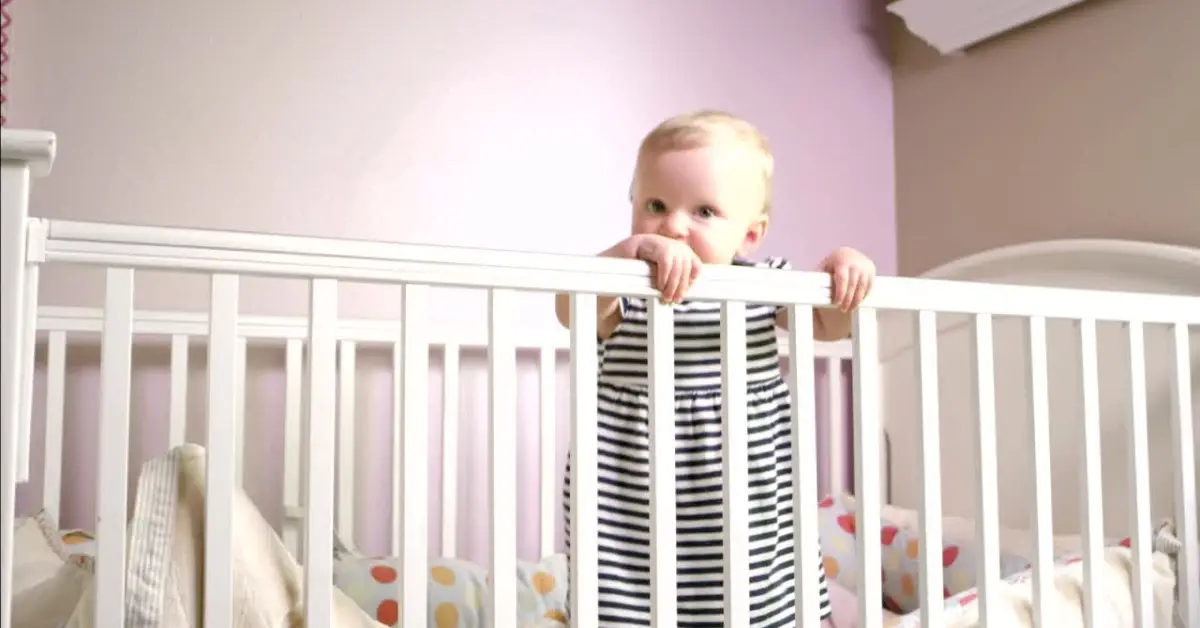
Have you ever looked at your baby’s (expensive) crib and thought that it looked like a cage? You’re not alone. Cribs have been around for centuries, and their design has definitely evolved over time. But one thing that has stayed the same? The use of slats.
So why do cribs have slats or bars? Turns out, there are a few reasons. Let’s take a look:
Historical Reasons!
First, let’s take a little dive into history back into the 17th century to see where the slat design originated from. Believe it or not, cribs with slats were designed to keep babies from getting crushed under their parents’ weight. Back in the day, co-sleeping was very common and babies were often placed to sleep right next to their parents in the same bed they were sleeping in, so if the baby managed to roll over, they would find themselves right under their parents’ side or they could fall on the floor and injure themselves.
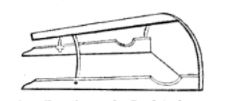
The arcuccio, the ancestor of the modern crib
To prevent this, they started placing half a whiskey barrel with three slats over the baby which acted as a protective shell and stopped them from rolling all the way under their parents. This design quickly caught on and became known as the arcuccio, which is the ancestor of the modern crib.
Slats Ensure the Proper Ventilation of The Crib
Nowadays, co-sleeping or bed sharing is no longer recommended by the AAP (American Academy of Pediatrics) so we obviously don’t have to worry about babies getting crushed under their parents’ weight. But there is still a valid reason for having crib slats – they provide adequate ventilation for the baby.
Babies need plenty of air to breathe and slats are there to ensure your baby gets enough air circulating in their crib which would be impossible to achieve with solid sides instead of slats.
This is how crib slats help to prevent SIDS (Sudden Infant Death Syndrome). Crib slats create a space between the mattress and the side of the crib which helps reduce the risk of SIDS. How? Well, when a baby is sleeping on their back and manages to roll over they will still be able to breathe correctly if they find themselves against the sides of the crib.
A Very Thought Through Design
Modern cribs are designed to provide your baby with a safe enclosed space for sleeping. The fact that your baby is meant to be sleeping in their crib unsupervised for hours at a time means that the crib you use for your baby should be up to standards so you can put your baby down to sleep without worrying about their safety in your absence.
The main worries that come with using a crib for your baby are the following:
- the risk of your baby being able to climb out of the crib and fall down, which can lead to serious injuries.
- The risk of your baby getting dangerously stuck in between the slats of the crib, which can lead to suffocation.
Related: How to Keep Baby’s Legs from Getting Stuck in Crib?
Safety Requirements for Crib Slats
The design of the modern crib has undergone a lot of evolution over the years, but one thing that has always been taken into account is the safety of the baby. And crib slats play an important role in this.
All cribs sold in the United States must meet specific safety requirements regarding the crib slats. These requirements include an exact distance between the crib slats that shouldn’t be exceeded, no missing or cracked slats and the crib slats should be high enough so that the baby cannot easily climb out of the crib.
Spacing Between the Crib Slats
The distance between the crib slats is very important as it can determine whether or not your baby can escape from the crib. The distance between the slats should never exceed 2 3/8 inches (6 centimeters) which is about the size of a soda can. If there are any spaces larger than this, your baby could potentially fit their head through them and become stuck or even worse, injure themselves.
No Missing or Cracked Slats
Another safety requirement for crib slats is that there should be no missing or cracked slats. If a slat is missing, it could create a hazardous situation for your baby as they could easily put their hand or foot through the opening and become dangerously stuck.
Cracked slats are also a hazard as they could easily break and fall off, which could cause your baby to become injured. They could also cause scrapes or cuts on your baby’s limbs if they can be in contact with them.
Crib Slats Should Be High Enough
The final safety requirement for crib slats is that they should be high enough so that the baby cannot easily climb out of the crib. Most cribs have slats that make the crib around 35 inches (89 centimeters) high measured from the mattress position.
Having high enough crib slats ensures that your baby cannot climb out of the crib on their own and fall down. This is the most common mechanism of injury observed in a study published by the AAP related to injuries associated with cribs, playpens, and bassinets among children younger than 2 years old in the United States. Falling from the crib represented 66.2% of cases treated in emergency departments for injuries related to cribs, playpens, and bassinets.
Related: Mini Crib vs Crib – Which One is Best for You?
Solid Back Crib vs Slats All Around
Choosing to buy a crib that has solid sides or a crib with slats all around is really down to personal preferences.
While both types of cribs are safe, as long as they meet the safety requirements set by the CPSC, I would be more comfortable choosing a crib with slats all-around mainly because of the increased ventilation inside the crib and for increased visibility for a baby monitor.
Cribs with Slats All Around
Having slats all around the crib mean that the crib gets enough air circulation and that your baby doesn’t risk rolling over and getting stuck against the solid side of the crib (which for me would be a nightmare).
Another reason why I would go with a crib that has slats all around is that it’s easier to see through the slats if you’re using a baby monitor. With a solid back crib, you can’t see your baby as well which could mean that you’re not able to respond to them as quickly in the event that they need you.
Cribs with Solid Back or Sides
On the other hand, you can easily find yourself drawn to a crib with a solid back as they come in very aesthetically pleasing designs and can be a perfect match for your nursery’s décor. Cribs with a solid back are also easily convertible as you can turn the solid back into a headboard for a twin bed, so you get more use out of your crib.
You also don’t have to worry about your baby’s safety as all cribs sold in the United States must meet specific safety requirements. It really comes down to what is more important to you. Whichever one you choose, make sure that the crib you buy meets all of the safety regulations set by the CPSC, and be sure to follow safe sleep guidelines.
Conclusion
So there you have it – valid reasons why cribs have slats that might make you look at your baby’s crib differently and the safety requirements that must be met by crib slats for all cribs in the United States.
If your crib doesn’t meet these requirements, it might be time to consider getting a safer sleeping arrangement for your little one! And if you’re still on the fence about whether or not you should use a crib, there are plenty of great alternatives out there that can provide your baby with a safe and comfortable place to sleep.
The purpose of this article is informative and educational only. It’s not a substitute for medical consultation or medical care. We do not accept any responsibility for any liability, loss, or risk, personal or otherwise, incurred as a consequence, directly or indirectly, from any information or advice contained here. Babycious may earn compensation from affiliate links in this content.
